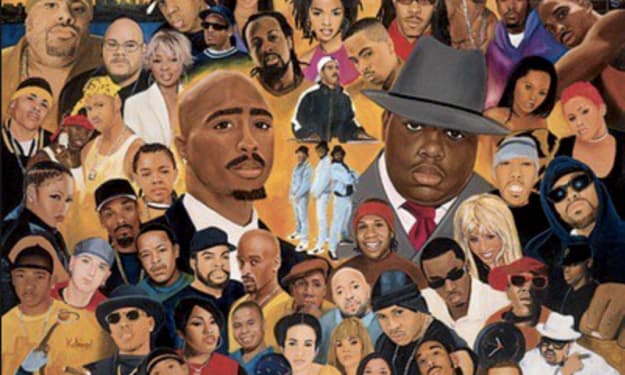Kayla Charles
Bio
Born and raised in MTL
Stories (4/0)
The President
The Presidency in the United States contains many components of which the office is deemed to be the most important and powerful in the developing world; but it does not act alone. Therefore, it is important to study the other branches of government that acted to create and implement policies when considering George W. Bush’s War on Terror. Even after all this time, the situation provokes polarizing arguments by two opposing beliefs; those who support, or those who dispute what Bush and his administration chose to do following the attacks on September 11, 2001. While controversy arose, President Bush was able to follow through with his foreign policy initiative and promote it as a global fight to end terrorism and not specifically a response to 9/11 (Boyle 2008, 191). Although the international impact and relevancy are essential and have thus changed global politics forever, I chose to focus in on the domestic aspects of this issue, instead. Particularly, Bush’s administration and the respective relationship they held with the United States Supreme Court. Though the Supreme Court did issue numerous decisions relating directly to the methods the United States used against detainees during the War on Terror (Wheeler 2009, 677), I will focus more proficiently on the relationship between the court in link with the President locally, and how it subsequently affected their relative powers. My question in place then is, how did the relationship between the office of the President and the United States Supreme Court lead to Bush’s ability to implement the War on Terror?
By Kayla Charles6 years ago in The Swamp
Democracy and Regime Changes
Between 1917 and 1991, Russia was a single-party state led by the Bolsheviks, later to be known as the Communist Party of the Soviet Union (CPSU) (Service 2009, 62). From the beginning, the CPSU had authoritarian tendencies that were built into the communist institutions of the Soviet regime. They held a monopoly of political and economic power in the Soviet Union in terms of having a “Leninist party dictatorship, a transformative ideology, central planning, and state ownership of the means of production.” (Bunce 1999, 22). By the time Gorbachev took the office of General Secretary in 1985, the Soviet centralized economy required major reforms in order to increase the quantity and quality of industrial output that would meet the levels of the United States and Western European states (Service 2009, 441). In 1987, Gorbachev introduced two reforms: perestroika (reconstruction) and glasnost (openness). Glasnost opened the space for the airing of grievances, for more information to be available, and for media to be freer. While the Soviet Union was once capable of repressing nationalism, Gorbachev’s social reforms led many ethnic groups of the Soviet Union and the Soviet Bloc into nationalist mobilization (Service 2009, 456-458). On December 26th, 1991, the Belavezha Accords effectively ended the Soviet Union and were signed by the Russian President Yeltsin, Ukrainian president Kravchuk, and Belarusian parliament chairman Shushkevich (Service 2009, 506-507). Following the collapse of the Soviet Union, Russia experienced a triple transition, meaning a political and economic transition and a transition in statehood, in which Russia was recognized as a sole state. While Yeltsin played an essential role in the development of an embryonic Russian democracy, his later years were marked by a partial retreat from the development of a truly democratic political system. The difficulties of the economic transition and the political complications that ensued convoluted the task of creating a solid foundation for a democratic society in the Western sense (Service 2009, 529-534). The results were perverse, as there was a rise in oligarchs, this term “refers to a small group of leaders in the largest financial and industrial structures who are closely tied to the regime” (Zudin 2000, 5).
By Kayla Charles6 years ago in The Swamp
The U.S. Presidency
1. Understanding Obama David Remnick’s article provides stimulating insight on the many reasons as to why Barack Obama is regarded as a weak executive with attitudes that influence his sense of power, as well as dictate his motives and outcomes he has pursued as the 44th president of the United States. The body of text provided an opportunity to understand the varied perspectives within the United States. We are presented with many examples throughout his years as president which showcase the opportunity for individuals to continuously criticize all that he has done, or what he has failed to accomplish. Coming to terms with it all, some concerns become apparent with Obama, who at the beginning of his run for president was typified as an individual who would finally ignite change in the States. However, there are aspects within this paper that would lead to disagreeing with Remnick. In terms of the claim in which it is said that Obama does not understand power, I disagree.
By Kayla Charles6 years ago in The Swamp
Highly Intellectual People Hovering Over Politics
1975There I was, standing in the crowd cheering for the fact the war was over, and our troops were leaving Vietnam. Defeated, it felt as though America was going through a drought. I felt so sad that we had lost so many, but our patriotism was strong; I could tell you that much. I walked through the streets of New York City, looking to find meaning for all I have been going through. As I walked, I thought to myself how thankful I was for music. I couldn’t wait to get home and play my Captain and Tennille record, my personal favorite was “Love Will Keep Us Together”. What this world needed was a bit of love. I felt lost in a country which had strived off of unity. I, for one, had never seen our communities so divided. I thought to myself the one thing I was always able to lean on was music. I didn’t listen to much rock. My folks were big on church. I listened to a lot of gospel, and hours of blues tracks. Back then, I didn’t have much of a choice in what I was listening to. Come the late 70s, Bambaataa was the “firestarter of the hip-hop generation” (Chang 2005, 92). Hip Hop came to me at a very young age. What was Hip Hop? Something so unfamiliar to the masses, to my family. Back then, Hip Hop was a total of four elements. These elements were MCing, DJing, breakdancing, and graffiti art (Alim 2004, 272). This was seen everywhere before, but none of it had come together under the umbrella that is hip hop. A way to entice a young confused generation, I had never felt more connected to a genre in my life. I grew up to be an avid believer in the messages that resonated through my Walkman in the late 70s. I saw the potential of Hip Hop. The positive impact it held on me back then stayed with me until today, the day I chose to write about this growing memory of Hip Hop. Let’s be real, Hip Hop was created here, created in my city. “It's widely accepted that hip hop was born about 40 years ago at a Bronx house party on Aug. 11, 1973” (Lebeau 2013, 1). I felt it was essential to model what I had associated Rap to. Run DMC, huge in the 1970s, portrayed the ultimate look for B-boy fashion. As soon as I familiarized myself enough with what Run DMC was about, all I could rock were Adidas track pants with the sweater, bucket hats, with a whole lotta jewelry. I myself adored the Nike Cortez sneakers, which became huge after the 72 Olympics. I guess there was just something about Hip Hop that made me happy; Hip Hop made me feel hip, isn’t that ironic?
By Kayla Charles6 years ago in Beat





